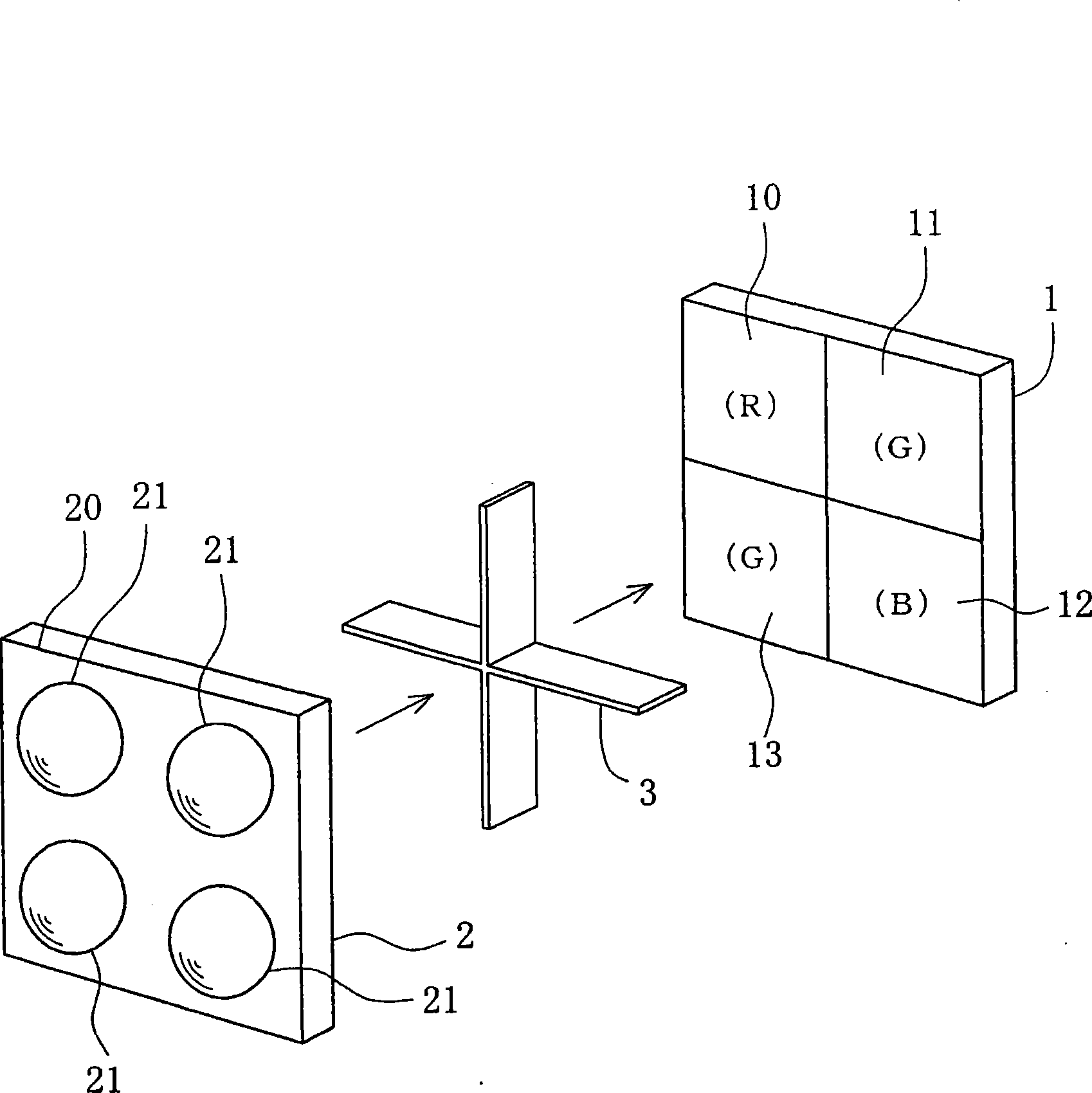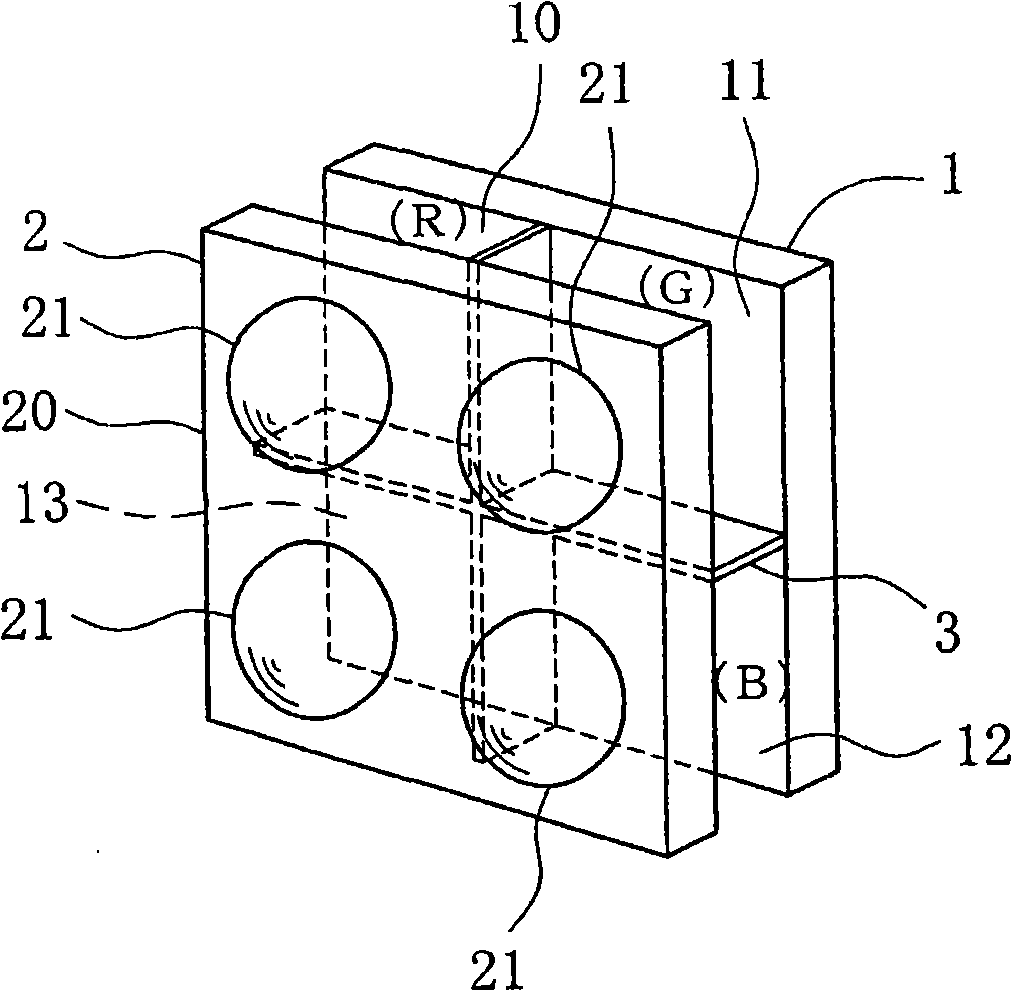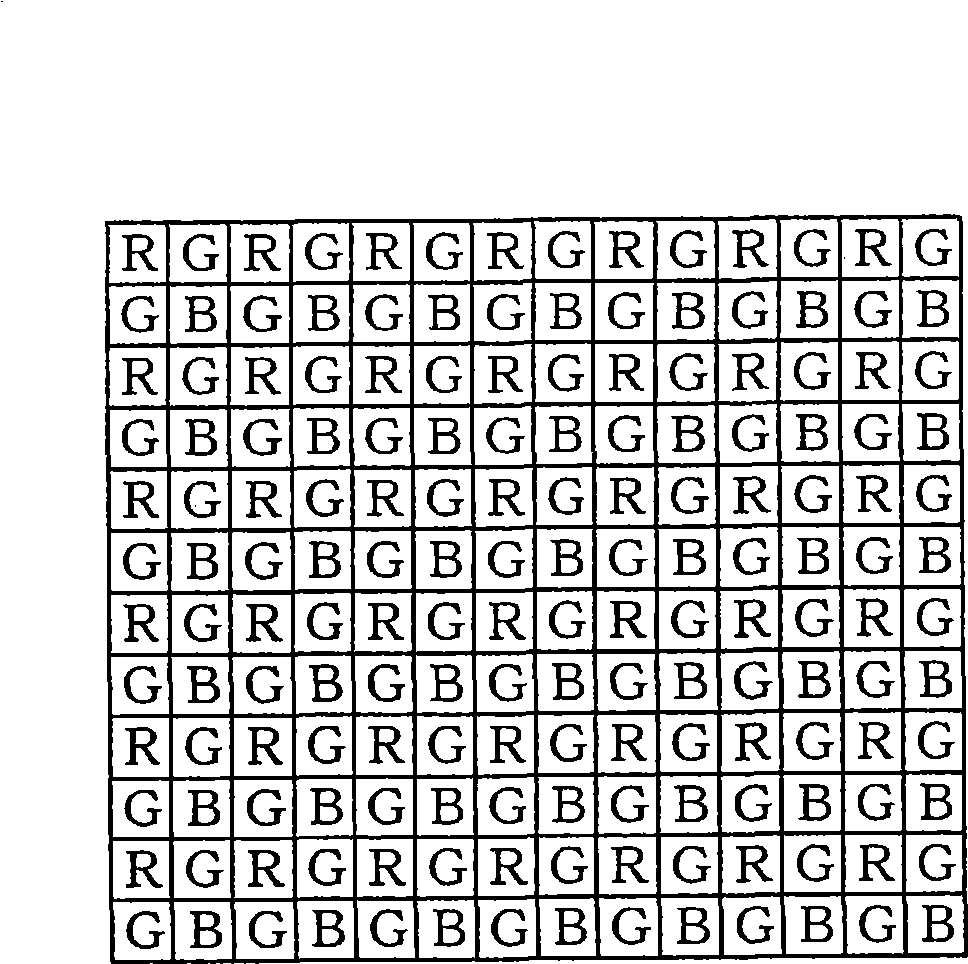Camera module
A technology of cameras and imaging elements, which is applied in the field of camera modules, can solve problems such as hindering thinning, chromatic aberration, and different refractive indices of lenses, and achieve the effects of reducing distance, preventing crosstalk between regions, and improving image quality
- Summary
- Abstract
- Description
- Claims
- Application Information
AI Technical Summary
Problems solved by technology
Method used
Image
Examples
Embodiment Construction
[0024] Embodiments of the present invention will be described in detail with reference to the drawings. figure 1 An exploded view showing the camera module of this embodiment. As shown in the figure, the camera module according to this embodiment includes a rectangular plate-shaped imaging element 1, a plate-shaped lens member 2 facing the imaging element 1, and a plate-shaped lens member 2 disposed between the imaging element 1 and the lens member 2. The partition plate 3 receives the light condensed by the lens member 2 by the imaging element 1, converts the light into an electrical signal by the imaging element 1, and obtains image data.
[0025] In the imaging element 1, a plurality of photoelectric conversion elements are arranged on a light receiving surface. In addition, since the photoelectric conversion elements are extremely small, they are not shown in the drawings. Each photoelectric conversion element has a color filter that passes only one of red, green, and b...
PUM
 Login to View More
Login to View More Abstract
Description
Claims
Application Information
 Login to View More
Login to View More - R&D
- Intellectual Property
- Life Sciences
- Materials
- Tech Scout
- Unparalleled Data Quality
- Higher Quality Content
- 60% Fewer Hallucinations
Browse by: Latest US Patents, China's latest patents, Technical Efficacy Thesaurus, Application Domain, Technology Topic, Popular Technical Reports.
© 2025 PatSnap. All rights reserved.Legal|Privacy policy|Modern Slavery Act Transparency Statement|Sitemap|About US| Contact US: help@patsnap.com



